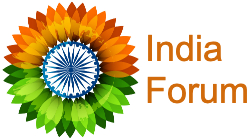06-02-2008, 12:30 AM
http://www.frontlineonnet.com/stories/20...109000.htm
<img src='http://www.frontlineonnet.com/images/20080606251109005.jpg' border='0' alt='user posted image' />
SCIENCE
Genetic landscape
R. RAMACHANDRAN
The Indian Genome Variation Consortium is carrying out a unique study to provide a comprehensive genetic mapping of India as a whole.
The billion-plus people of India today comprise 4,963 communities, which include several thousands endogamous groups, speak in 325 functioning languages and write in 25 different scripts.
HISTORIANS and anthropologists have over the years provided us with a fairly good understanding of the peopling of India, its evolution over centuries to its current diverse compositional fabric, its population groupings in terms of geography, language, culture and ethnicity as well as its characteristically unique societal stratification and hierarchies. The billion-plus people of India today comprise 4,693 communities, which include several thousands of endogamous groups, speak in 325 functioning languages and write in 25 different scripts. Now, as a result of what is perhaps the largest multi-institutional research effort (at least in biology) in this country, we have a genetic basis to this unparalleled diversity.
The IGVC
This research effort began about five years ago under the name of the Indian Genome Variation Consortium (IGVC). It has involved many Indian anthropologists and over 150 scientists drawn from six laboratories of the Council of Scientific and Industrial Research (CSIR); the Indian Statistical Institute (ISI), Kolkata; and The Centre for Genomic Application (TCGA), an institution in New Delhi set up in the public-private-partnership (PPP) mode by the CSIR and the Chatterjee Group of Kolkata. The six CSIR institutes are the Institute of Genomics and Integrative Biology (IGIB), Delhi, the nodal institution for the consortium; the Central Drug Research Institute (CDRI), Lucknow; the Indian Institute of Toxicology Research, or IITR (formerly the Industrial Toxicology Research Centre), Lucknow; the Institute of Microbial Technology (IMTECH), Chandigarh; the Indian Institute of Chemical Biology (IICB), Kolkata; and the Centre for Cellular and Molecular Biology (CCMB), Hyderabad. (Interestingly, the letters in the acronym of the PPP institute â T, C, G, A â also stand for the molecules called bases in nucleotides, the fundamental structural units of deoxyribonucleic acid, or DNA, whose ordering or sequence in DNA codes for genetic information.)
Here is the website of the project. I wish the government had not taken up this study, because it has the potential of causing immense mischief and social turmoil if not handled properly, especially in the hands of the Gora sociologists.
http://www.igvdb.res.in/
Indian history and anthropology has been politicized. It is not a good idea for this study and this information to go to other western countries.
<img src='http://www.frontlineonnet.com/images/20080606251109005.jpg' border='0' alt='user posted image' />
SCIENCE
Genetic landscape
R. RAMACHANDRAN
The Indian Genome Variation Consortium is carrying out a unique study to provide a comprehensive genetic mapping of India as a whole.
The billion-plus people of India today comprise 4,963 communities, which include several thousands endogamous groups, speak in 325 functioning languages and write in 25 different scripts.
HISTORIANS and anthropologists have over the years provided us with a fairly good understanding of the peopling of India, its evolution over centuries to its current diverse compositional fabric, its population groupings in terms of geography, language, culture and ethnicity as well as its characteristically unique societal stratification and hierarchies. The billion-plus people of India today comprise 4,693 communities, which include several thousands of endogamous groups, speak in 325 functioning languages and write in 25 different scripts. Now, as a result of what is perhaps the largest multi-institutional research effort (at least in biology) in this country, we have a genetic basis to this unparalleled diversity.
The IGVC
This research effort began about five years ago under the name of the Indian Genome Variation Consortium (IGVC). It has involved many Indian anthropologists and over 150 scientists drawn from six laboratories of the Council of Scientific and Industrial Research (CSIR); the Indian Statistical Institute (ISI), Kolkata; and The Centre for Genomic Application (TCGA), an institution in New Delhi set up in the public-private-partnership (PPP) mode by the CSIR and the Chatterjee Group of Kolkata. The six CSIR institutes are the Institute of Genomics and Integrative Biology (IGIB), Delhi, the nodal institution for the consortium; the Central Drug Research Institute (CDRI), Lucknow; the Indian Institute of Toxicology Research, or IITR (formerly the Industrial Toxicology Research Centre), Lucknow; the Institute of Microbial Technology (IMTECH), Chandigarh; the Indian Institute of Chemical Biology (IICB), Kolkata; and the Centre for Cellular and Molecular Biology (CCMB), Hyderabad. (Interestingly, the letters in the acronym of the PPP institute â T, C, G, A â also stand for the molecules called bases in nucleotides, the fundamental structural units of deoxyribonucleic acid, or DNA, whose ordering or sequence in DNA codes for genetic information.)
Here is the website of the project. I wish the government had not taken up this study, because it has the potential of causing immense mischief and social turmoil if not handled properly, especially in the hands of the Gora sociologists.
http://www.igvdb.res.in/
Indian history and anthropology has been politicized. It is not a good idea for this study and this information to go to other western countries.

